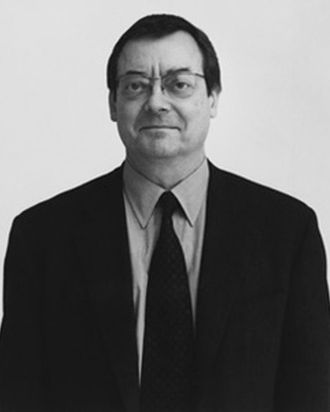
Robert Ryman’s all-white paintings seem as if they were fated to come into existence from the beginning of modern art. Starting in the 1950s and for nearly a lifetime, he essentially painted this same almost all-white painting. Metaphysically speaking, his art represents a concrete Platonic nonobjective milestone. Malevich, Rodchenko, Klein, Fontana, Newman, and others made monochrome canvasses before Ryman. Rauschenberg and Manzoni made all-white paintings. Ryman’s doggedness to this one thing makes him the avatar of the subgenre of white paintings as surely as Dan Flavin is of fluorescent. Ryman is the deliverer, explorer, explainer, poet of this type.
It can take decades to understand why Ryman’s paintings are art at all. It’s worth it though and helps open you to art in ways you mightn’t expect. Ryman’s work has always been the subject of cartoons of vexed viewers scowling at this latest art sham. Yet as with all art, even Ryman’s seemingly obscure abstract paintings are for anyone; they’re just not for everyone.
Ryman reduced painting to its most basic processes, components, conditions, and qualities in undisguised clear ways. The one thing you have to accept about his art is a formalist telling of art history that it has within it, among other things, that painting is about itself. Wallace Stevens wrote that “Poetry is the subject of poetry.” Ryman said he made “paintings of paint” and used white “so that everything will be visible.” He called his work “absolute” and “realist” because he was uninterested in creating an illusion. Set doubt aside for a minute and grapple with Ryman’s full emptiness, the physicality and luminescence of his paint, the flatness, brushstrokes, scale, formats, processes, surfaces, touches, tonalities, degrees of opacity and viscosity, how the painting hangs on or relates to a wall.
Ryman’s work is far from as simple as it sounds. Just his materials and support surface form a lexicon of painterly vocabulary. He used oil paint, enamel, acrylic, chalk, casein, crayon, staples, gouache, and more. He covered surfaces made of canvas, plywood, Plexiglas, wallpaper, wax paper, mat board, manila folder, jute sacking, fiberglass, steel, copper, aluminum, among other surfaces. His finish was as varied. He worked mat, glossy, rough, smooth, feathery, gruff. His paintings also attach to walls in all manner of hanging mechanisms and handmade devices. Some on traditional hooks or wires strung across the back of the painting. More often bolts, screws, clips, clasps, brackets, braces, grommets, and struts. Some hang flat to the wall; others cantilever out as horizontal tabletoplike things.
Why should we look at white paintings? In 1963, Robert Rauschenberg said he thought of “white paintings as being not passive but very … hypersensitive.” Ryman lets you consider what marks and strokes came in what order; how paints have been blended, are raw, applied quickly, slowly, consistently, or with changes in direction mid-mark. You see scraping, scratching, rudimentary drawing, erasures, pentimento, paint that is placid, smoothed out, foaming up, with gluts, drips, daubed. Order and chaos merge. Ryman’s work is never Expressionistic, neither is it an Abstract Expressionist notion of the ineffable sublime. There’s a quiet concentration and absorption to everything he does that leaves a lot of room for viewer’s contemplation.
Ryman’s paintings are similar to describing the way people dress. There are scores of things going on in every garment, outfit, and combination. Describing them opens you to the richness of fashion, fabric, craft, color, nuance, taste, and much more. By now we see that the one supposed qualifying condition of accepting a Ryman as a modernist telling of art doesn’t quite apply. For him the modernist monochromatic trope is a gateway or foyer to unexpected visual-conceptual experiences. As you free yourself of doubt, pondering his seemingly obtuse or boring abstraction can expand in your mind, and suggest other orders of looking and compositional structures. His paintings become engines of an odd sensuousness and painterly syntaxes. In a limited number, and not too large, I love looking at a Ryman, love pleasuring in the work and feeling how it opens us, how revelatory things can happen with even the most limiting of processes.




